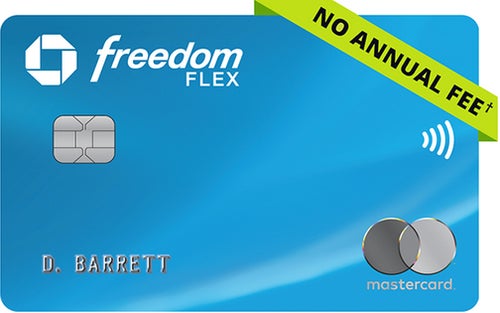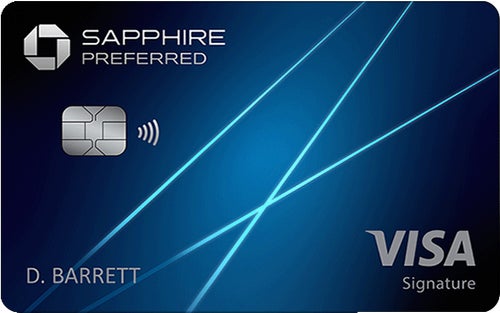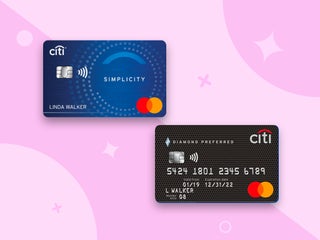Summary
The Chase Freedom Flex and Chase Sapphire Preferred cards have some overlap when it comes to rewards categories, but each offers its own advantages.
The content on this page is accurate as of the posting date; however, some of our partner offers may have expired. Please review our list of best credit cards, or use our CardMatch™ tool to find cards matched to your needs.
Two of Chase’s most popular credit cards, the Chase Freedom Flex℠ and the Chase Sapphire Preferred Card, have both earned high praise from savvy rewards hunters who like to squeeze as much value as possible from their spending.
Here we take a look at each card’s value and help you decide which is the best fit for you.
Chase Freedom Flex vs. Sapphire Preferred: At a glance
| Card |  Chase Freedom Flex® |  Chase Sapphire Preferred® Card |
| Rewards rate |
|
|
| Sign-up bonus | $200 when you spend $500 in the first 3 months | 60,000 points when you spend $4,000 in the first 3 months |
| Annual fee | $0 | $95 |
| Estimated yearly rewards value (for someone who spends $15,900 and maxes out the Freedom Flex rotating categories) | $532 | $578 |
| Card benefit highlights |
|
|
Rewards structure
The Chase Sapphire Preferred charges a yearly fee of $95 and offers 5X points on travel purchased through Chase Ultimate Rewards; 3X points on dining, select streaming services and online grocery purchases; 2X points on other travel purchases and 1X point on general purchases. Plus, you get a $50 Anniversary Hotel Credit before your travel rewards kick in.
The Chase Freedom Flex, by contrast, offers a wide array of bonus categories and no annual fee. Though it’s best known for its 5% cash back rate in rotating quarterly categories, such as gas and online shopping (upon enrollment, on up to $1,500 in spending per quarter, then 1%), it also offers 3% back on drugstore and dining purchases. Like the Sapphire Preferred, the Freedom Flex also offers 5% on travel booked through the Chase Ultimate Rewards portal.
Sign-up bonus
The Chase Sapphire Preferred card is known as one of the best travel credit cards with one of the cushiest sign-up bonuses you can get without paying more than $100 on an annual fee.
How cushy you may ask? Right now, you can get 60,000 points (worth $750 in travel) after you spend $4,000 in three months. That spending goal may seem formidable, but if you use your card to pay all your utility bills and finally get that big purchase you’ve been eyeing (perhaps a new laptop), you’ll likely find it’s possible to reach.
On the other hand, the Chase Freedom Flex offers a $200 bonus (20,000 Ultimate Rewards points, worth 1 cent each) after spending $500 in the first three months. Though not as generous as the Sapphire Preferred, it’s a common welcome bonus among other top cash back credit cards.
Redeeming rewards
For more control over how you use your points, the Chase Sapphire Preferred is the clear winner. It has a more flexible transfer policy that lets you transfer points on a 1:1 basis to a number of Chase travel partners.
For example, frequent flyers of Southwest Airlines, British Airways, Air France, Korean Air, Singapore Airlines, United and Virgin Atlantic can apply their Sapphire Preferred points to their travel loyalty programs. Frequent guests of Marriott Bonvoy, IHG and Hyatt can do the same. And along with the 25% travel redemption bonus when you book through the Ultimate Rewards portal, you can redeem your points to cover most or all of the cost of a trip.
The Chase Freedom Flex is no chump in this department either. It’s a cash back card but it actually earns your rewards as Ultimate Rewards points, which you can redeem for travel on the portal. Other redemption options include statement credits, direct deposit, gift cards and Apple purchases – all for 1 cent per point. You can even use your points for Amazon.com purchases, though they’ll only be worth 0.8 cents each.
Annual fee
Credit card diehards know some annual fees aren’t worth the cost, when weighing a card’s rewards, benefits and annual bonuses. And for anyone whose budget can’t really fit an annual fee, the Chase Freedom Flex doesn’t have one, and it will bring give you a number of rewards opportunities through its rotating and fixed bonus categories. It also comes with amazing perks like cellphone protection, extended warranty, trip cancellation/interruption insurance and a free DashPass membership for three months (and 50% off the next nine months).
You’ll pay an annual fee of $95 for the Chase Sapphire Preferred, but it comes with a slew of advantages. Not only does it give a $50 Ultimate Rewards Hotel Credit (annually), it comes with trip cancellation/interruption insurance, baggage delay insurance, roadside dispatch and a free DashPass subscription for one year (must activate by Dec. 31, 2024).
Either way, both of these cards give you a real bang for your buck, though keep in mind that the Chase Freedom Flex does provide a number of travel insurances for at cost at all.
Chase Freedom Flex: Best for everyday purchases
For cardholders who want to earn rewards on travel spending and everyday expenses, such as dining, groceries, clothing and gas, the Chase Freedom Flex is a clear winner. As long as you don’t mind tracking the Chase cash back calendar and enrolling in rotating spending categories, they can earn a significant amount using your Freedom Flex each time a purchase qualifies for a 5% bonus.
Let’s say, for example, that you spend an average of $300 per month on gas. If you use your Freedom Flex card to earn 5% cash back during a quarter that gas qualifies for a bonus and 1% cash back the rest of the year, you’ll earn $72 by the end of the year. By contrast, if you use a Sapphire Preferred card for the same purchases, you’ll earn around $45 on your gas purchases by the end of the year.
| Rewards earned on $300 monthly gas spend | |
| Chase Freedom Flex | Chase Sapphire Preferred card |
| ($300 x 5% x 3 months) + ($300 x 1% x 9 months) = $72 | $300 x 1 point x 12 months x 1.25 cent average point value = $45 |
Chase Sapphire Preferred: Best for flexible travel
The Chase Sapphire Preferred’s worth boils down to its excellent sign-up bonus and the ability to transfer points. In fact, transferring points can stretch the value of your points even more than if you redeem them for travel through Ultimate Rewards.
For example, the 60,000-point sign-up bonus is worth around $750 when you redeem it for travel through the Ultimate Rewards portal, but if you transferred to United at a 1:1 ratio, your points would be worth $912 (United miles are valued at 1.52 cents each). You could get even more value transferring to Singapore Airlines ($1,416 at a point value of 2.36 points per dollar) or World of Hyatt ($1,200 at a value of 2 points per dollar).
For heavy travelers, this perk alone can make up for the card’s annual fee. Based on your own preferences, you’ll still want to consider whether it makes more sense to redeem points through the Chase Ultimate Rewards portal or by transferring to partners.
| Rewards on $5,000 annual air travel spend | |
| Travel booked through Chase Ultimate Rewards | Transferring points to World of Hyatt |
| $5,000 x 5 points x 1 cent average point value = $250 | $5,000 x 2 points x 2 cents average point value = $200 |
Bottom line
Savvy card users will benefit the most from using both cards. In fact, the Chase Freedom Flex and Chase Sapphire Preferred are two spokes of the highly valuable Chase trifecta.
Because Chase lets you pool your rewards, you can transfer earnings from your Chase Freedom Flex to your Sapphire Preferred card and buy travel through Chase Ultimate Rewards with a 25% bonus – or transfer points to other loyalty programs.
Those who want to stick to just one card, however, shouldn’t have much trouble squeezing value out of either one of these. Unless you’re a heavy traveler, the Freedom Flex card has more to offer longtime cardholders – particularly since it doesn’t charge an annual fee. But the Sapphire Preferred card’s sign-up bonus and flexible redemption policy make it an ideal choice for those who want to earn a free trip quickly.
Editorial Disclaimer
The editorial content on this page is based solely on the objective assessment of our writers and is not driven by advertising dollars. It has not been provided or commissioned by the credit card issuers. However, we may receive compensation when you click on links to products from our partners.







